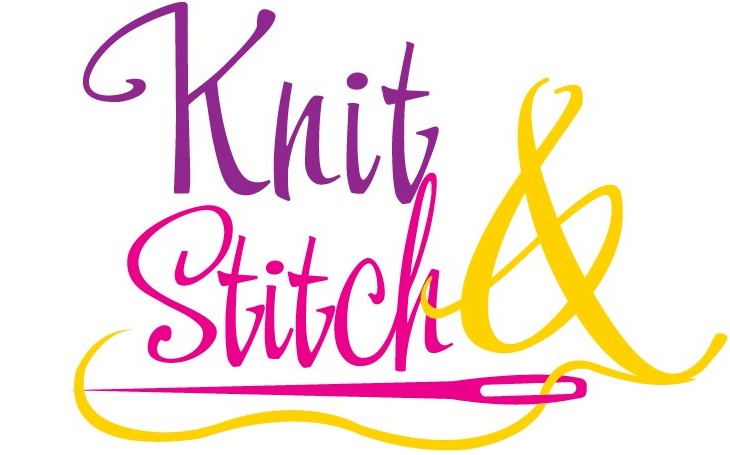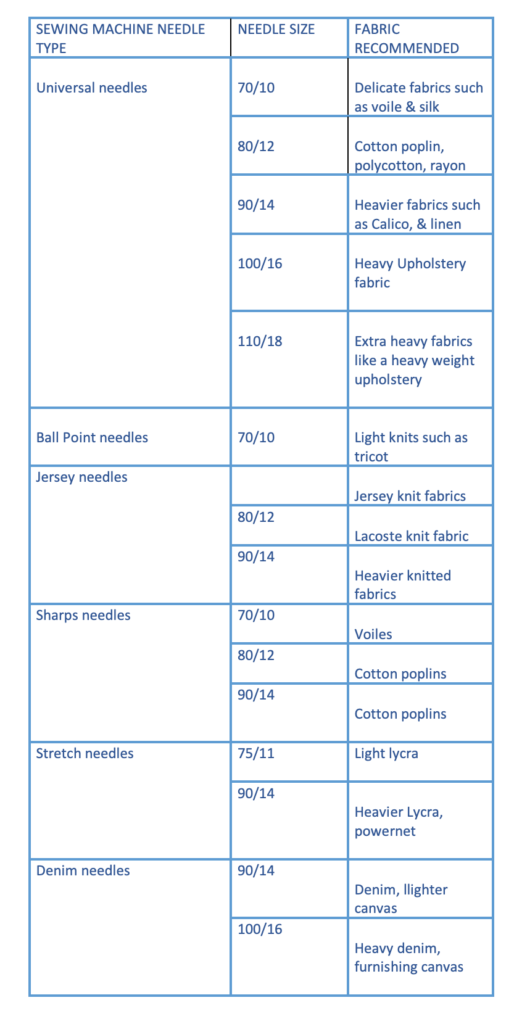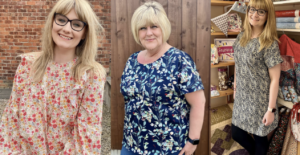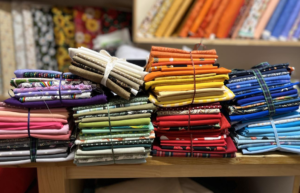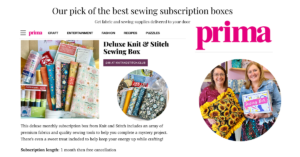As a beginner sewer, you may be wondering what types of needles are available for your sewing machine and what each one is used for, it can all be a bit confusing at first!
In this beginners guide to sewing machine needles, we will discuss the different types of needles and their purposes, as well as how often you should change your needle and tips on how to choose the right needle for your project.
So, whether you are new to sewing or just looking to learn more about needles, read on!
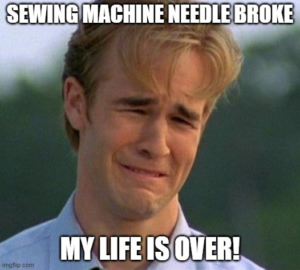
Firstly make sure that you always use a sharp needle, as a blunt needle can lead to missed stitches and uneven threads and can even damage some fabrics. We try to change our needles after most projects as they are pretty cheap to buy and it is worth the investment to ensure that your sewing is the best it can be.
To start with you need to know that machine needles are standardised across the brands of sewing machines which means you can purchase needles from different manufacturers with confidence that the needle you choose will work with your sewing machine.
There are however different types of needles for different sewing requirements. They come in different sizes and types and knowing the difference between them can be difficult. That’s why we’ve created this blog to explain what each needle does and how they work with various different fabrics.
You may also have noticed that needles have two numbers on the packets which can be a bit confusing especially if you are a beginner sewer, for instance 80/12. The first number refers to European sizes and the second to American sizes. The European sizes range from 60 to 110 and the American sizes range from 8 to 18.
Most sewers get familiar with either the American or the European size and you will find that you become familiar with the sizes quite quickly once you start sewing. Generally the bigger the number the thicker & stronger the needle.
Generally speaking a size 80/12 is a good general purpose needle to start with if you are working with medium weight cotton/ poly-cotton fabrics
Here are some of the different types of needles and how we suggest you use them in your sewing projects
Universal
As the name suggests universal needles can be used with a variety of fabrics and they are are the most commonly used needle. The lighter needles are used for lighter weight fabrics such as cotton poplin and poly-cotton and the larger sizes are used with medium to heavier weight fabrics. The universal needles is a good starter needle and probably the one that came with your sewing machine.
Ballpoint
Ballpoint needles have a rounded point which allows them to pass through the fabric without piercing it and damaging it. This type of needle is ideal for any kind of knitted fabrics as it prevents runs from forming in the fabric because it does not damage or cut the fibres.
Jersey
Jersey needles have a specially designed blade which allows them to pierce the fabric and cut the threads, making it perfect for woven fabrics. Jersey fabrics have a reputation for being difficult to work with so using the correct needle is especially important when using jersey fabrics.
Sharp
Sharp needles are designed for general sewing and have a sharp point which pierces the fabric easily. They are ideal for dense and lightweight fabrics like chiffon and batiste, so if you’re working with these types of materials a sharp point will help make sure your needle doesn’t get bent while sewing.
Stretch needles
Stretchy fabrics can be difficult to work with so to make life easier for yourself make sure you use a Stretch needle. This type of needle is the best choice for working with highly elastic fabrics like Lycra, power net or two way stretch knits. They allow extra room so you do not have skipped stitches and they prevent skinning over when sewing together these types of material which can be very lightweight.
Quilting
Quilting needles come in many different sizes and shapes to suit various needs, but they all have one thing common which is their length. They tend to be shorter than sharps needles allowing for neat and even stitching. If you are a beginner quilter think about starting with a size seven or eight which is easier to use.
Denim
Denim needles are used for denim as the name suggests but they also work well with other densely woven fabrics such as heavy twill and canvas. This type of needle has a very sharp point and a strong shank which is required for sewing through these heavy thick fabrics which may bend or break weaker needles.
Conclusion
Sewing needles can be classified by their size, type of point, and the way they are threaded. With so many types of needles available on the market, it can be difficult to know which one is best for your project. Hopefully, this guide has helped you understand the different types of sewing needles and given you some ideas about what fabrics they can be used with. Happy stitching!
